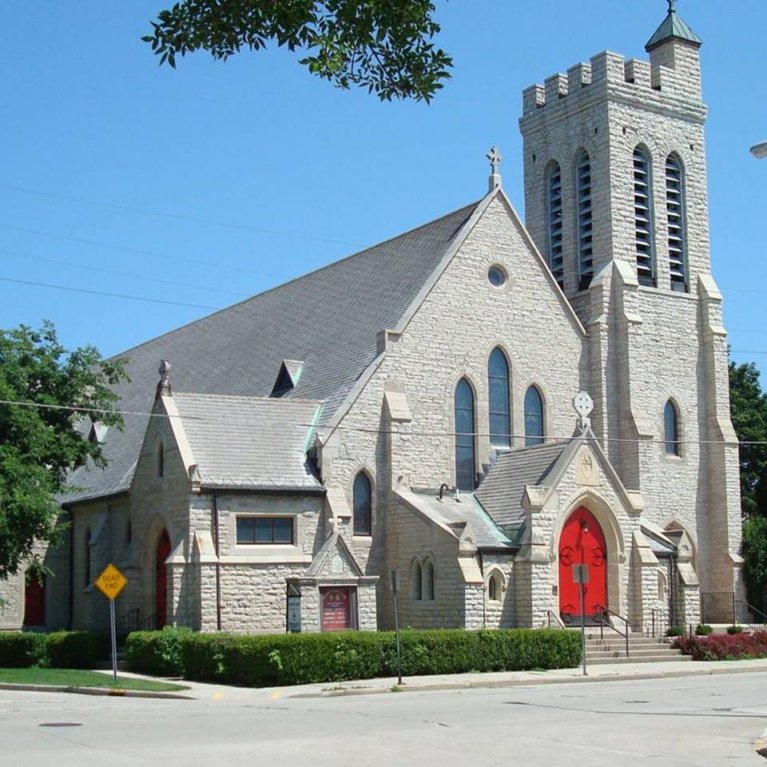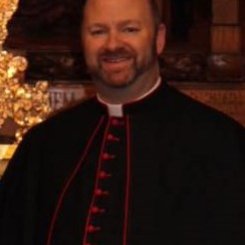St. Paul's Episcopal Cathedral
Share a story
On September 3, 1848, the Rev. Joshua Sweet, Episcopal clergyman in the village of Fond du Lac, went to the courthouse to formally organize St. Paul's church. His parishioners included some well-known names, Ruggles, McWilliams, Doty, Tallmadge, but they and their fellow Episcopalians had to be content with worshipping in various makeshift locations until their new parish had a church building of its own. This occurred in 1851 when a frame building was erected at the corner of Follett and Bannister {Macy} streets, becoming the first St. Paul's Episcopal church in Fond du Lac.
In 1866 the expanding congregation moved to a fine new stone structure on West Division Street. In 1875, with the formation of the Diocese of Fond du Lac, St. Paul's parish church became the Cathedral Church of St. Paul the Apostle and the seat of the first bishop, John Henry Hobart Brown of New York. In January 1884, this first stone building burned and was replaced, between the years 1885-1887, with the present structure at 51 W. Division Street. Bishop Brown died in 1888 and was succeeded by Charles Chapman Grafton of Boston/Providence.
The second bishop arrived to find an architecturally elegant building but one with a sadly incomplete interior. Much of what we presently admire in the Cathedral is due to Bishop Grafton's considerable efforts from 1889 to 1912 to finish the magnificent church. Some of the earliest acquisitions were the pulpit [done by local stonecarver Robert Powrie], the brass eagle lectern [its surround also done by Powrie], and the German carvings of 1893-1894. Coming from Munich and the workshop of Balthasar Schmitt, the twelve Apostles, St. Paul, and the twenty-five angels represent outstanding examples of late Victorian ecclesiastical art
Other than the Munich carvings, all other wood works are of American origin, done either in Fond du Lac [some by the FDL Church Furnishings Co., of which Bishop Grafton was a founder], or by the Svoboda Church Furniture Co. of Kewaunee, Wisconsin. The German carving is basswood [lindenwood] while the American pieces are red oak. The oldest American carving is that in the chapel of St. Augustine [late 1880's], while the newest was done in 1962 in the two transepts [St. Joseph chapel and the Mary shrine]. Coming between these two dates is the elaborate redoing of the sanctuary area in 1912. Starting with the magnificent rood beam and continuing through the text-embossed choir stalls to the imposing High Altar reredos, the 1912 carving includes the present cathedra as well as the tracery screens in the supporting arches.
Probably the most significant piece of ecclesiastical art in St. Paul's is the frontal on the St. Augustine chapel altar. An example of the Endolithic process, it is an exquisite piece of color-infused marble. The windows in this chapel, done in 1966 by the Rev. Robert L. Jacoby, show a very different use of stained glass from all the other windows in the building, most of which were done in Montreal, Canada by John Spence Co. in the 1880's and early 1890's.
Bishop Grafton requested that he be buried within the cathedral walls [Bishop Brown's grave, at his request, is outside in the Close] so in the year following his death on August 30, 1912, the area known as the chapel of St. Michael the Archangel was redone. The white marble and red porphyry sarcophagus, supporting a life-size figure of the Bishop in full vestments, became the permanent site of his burial on August 30,1913.
Throughout the years of succeeding bishops: Reginald H. Weller, Jr. third; Harwood Sturtevant, fourth; William H. Brady, fifth; William L. Stevens, sixth; and Russell E. Jacobus, seventh, the Cathedral Church of St. Paul the Apostle has remained a remarkable witness to its founders, a welcoming spiritual home to its worshipers, and a continual blessing to congregation, community and country.
Now, in this 21st Century, we continue to remember those who went before, who, living in the joyful love of Jesus Christ our Saviour, passed on to us the spirit of a dynamic faith. In gratitude to them and for God's ever-present blessings, our motto reflects pride in the past and faith in the future.
"A LIVING CHURCH IN A HISTORIC SETTING"
Ministries
Broken Bread
51 W Division St
Fond du Lac, WI 54935-4028
United States





